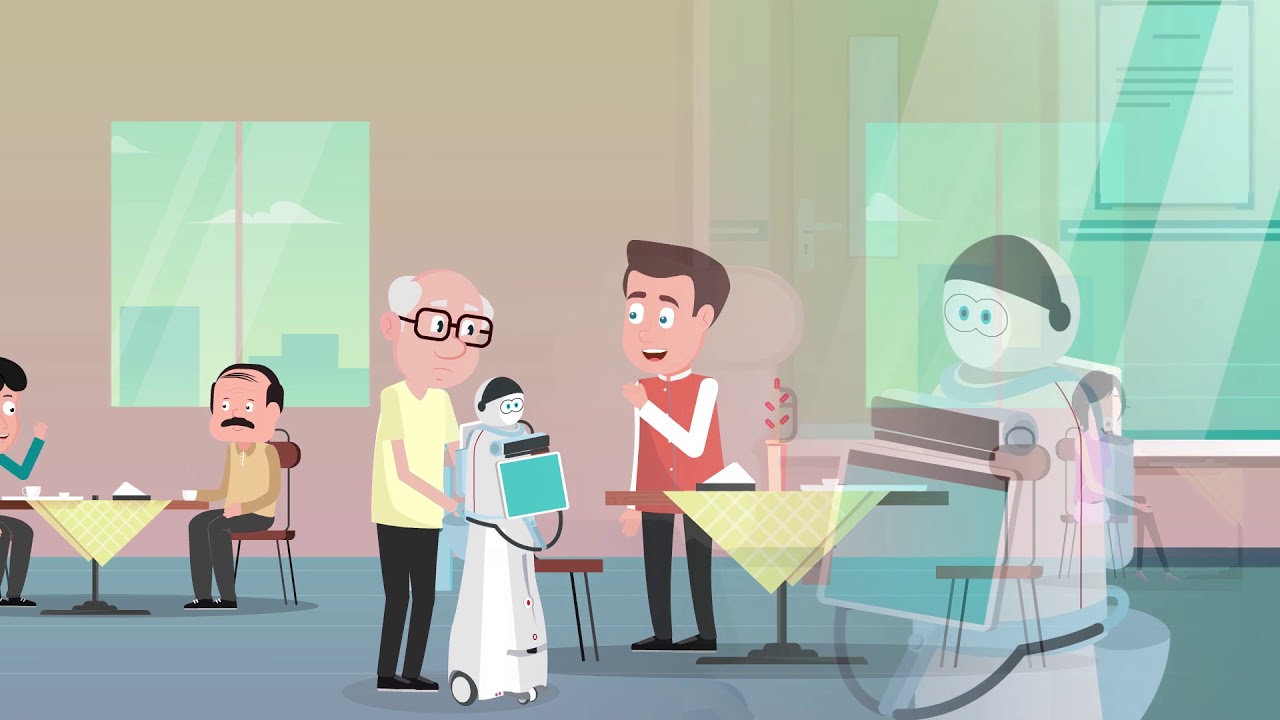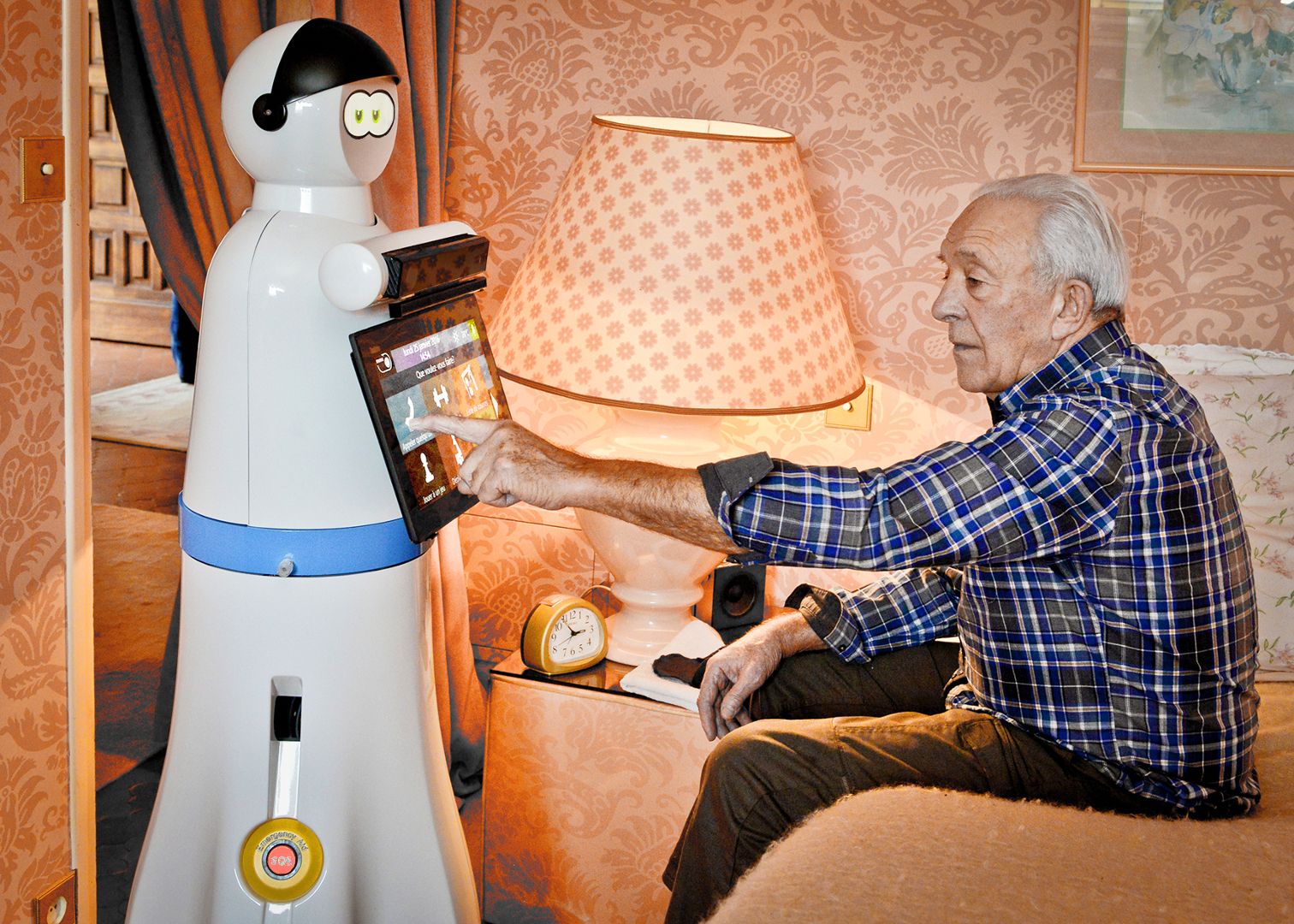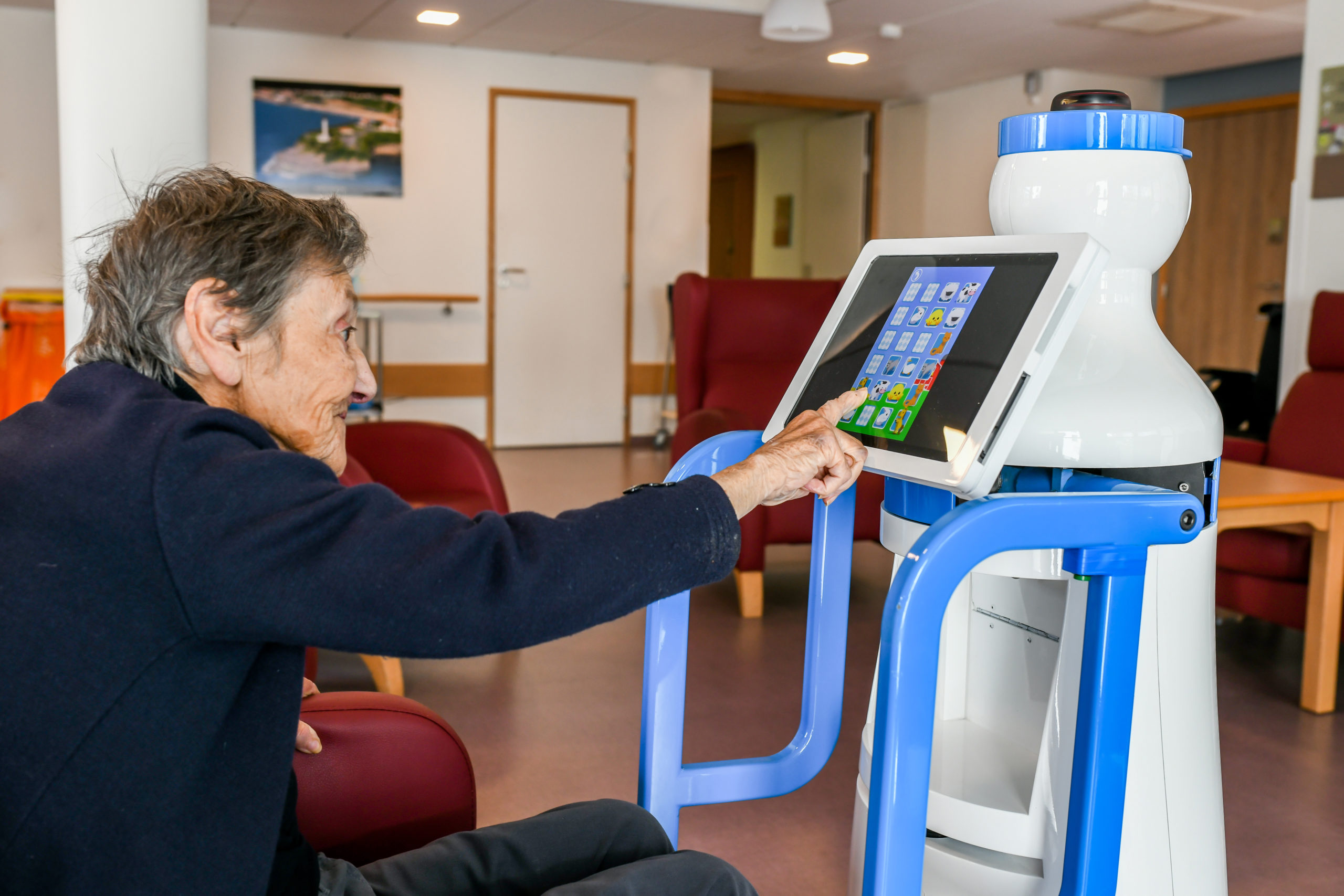The Kompa robot is a nurse and healthcare facility helper robot. His responsibilities allow him to free up time for nurses and thereby increase job quality. It does not take the position of nursing aides, but it does assist them with routine everyday duties.
A LIST OF FUNCTIONS
There are three primary functions:
Rounds: Rounds are tailored to the needs of the customer.
Monitoring tour: (day and night) to assist the absence of personnel on this critical duty. Indeed, the robot can walk independently, film, and detect a fall or a person leaving his room.
Rounds: Rounds are tailored to the needs of the customer.
Announcement tour: The healthcare institution may configure the robot to make certain announcements based on its needs, or even to play music while traveling autonomously.
Mobility aid: Assist in walking. Kompa, with its integrated bar system, assists patients in walking, either to exercise or merely to move, on an autonomous or guided track.
Entertainment: healing through play
There are several activities on the robot, including cognitive games to help patients with their memory or other requirements.

KOMPAÏ Robotics The robot to help frail people and their caregivers
How Kompai Robots Transforming Healthcare?
Assistive And Rehabilitation Robots
The market for rehabilitation robotics, which includes robots used in care settings as well as for assisted living, is estimated to reach $1.1 billion by 2021. In comparison to traditional therapy, research has demonstrated that robot-assisted rehabilitation can minimize the strain on therapists while improving mobility in the extremities.
Companionship And Care Robots
Companion and care robots could revolutionize life for an aging population by enabling independent living and potentially lowering emergency hospitalization rates. 'Care-bots developed by companies such as KompaiRobotics can converse, remind people of meetings, and keep track of shopping lists, much like a conventional home smart speaker.
However, their functionality outperforms that of traditional consumer robots, including fall detection, health warnings, and video-conferencing with clinicians and caregivers.
Robots For Medical Transport
Medical transport robots, like inventory management transport robots, may transfer supplies, drugs, and lab specimens across the hospital. Their navigation systems, like those of telepresence robots, must be strong enough to navigate the semi-structured, dynamic environment of a hospital.
They offer value to hospital operations by connecting with IT systems for safe and precise inventory tracking, comparable to the RFID-enabled medical inventory systems created by MANTA for CardinalHealth.
Telepresence Robots
While widespread telehealth adoption in the United States has historically been difficult, the coronavirus epidemic has lessened these hurdles.
To be able to undertake directed physical examinations, medical telepresence robots, which can offer remote consultation at various sites across a hospital, require autonomous navigation capabilities and powerful cameras.
Prescription Dispensing
Drug-dispensing mistakes are a common pharmaceutical error that robots can assist in correcting while also enhancing pharmacy operating efficiency.
The speed and precision that robots provide free up pharmacists to conduct more patient-facing jobs, which is especially beneficial in locations where qualified technicians are few.
Benefits Of Kompai Robot
Designed with care. KOMPAI was created by our team with the help of patient and caregiver focus groups. The objective was to provide both cognitive and physical help in a courteous, empathic, and comforting manner, without attempting to replace the distinctive presence of humanitarian aid.
Independence. Getting up from a comfortable position can be difficult, and aid is not always available. You just summon the robot over, stand up, and go with KOMPAI
Social connectivity. When we are lonely, it is a wonderful consolation to be able to see our loved ones rather than simply hear their voice! KOMPAI allows you to feel connected to family and friends by conversing with them as if they were present.
Health Monitoring. KOMPAI is capable of managing medical parameters and communicating with healthcare providers. All data from medical equipment is collected, aggregated, and stored in the cloud by KOMPA.
Making each day better. It might be difficult to make sense of time and location at times. KOMPA aids in the retention of vital knowledge and provides interactive pleasure.
Security. Falling is a continual danger with significant implications. KOMPAI performs verifications, notifies critical persons, and can even contact for emergency assistance.
Why Is A Robot Useful?
Industrial robots have aided in increasing production, safety, and saving time. Robots can provide extremely accurate, consistent, and high-quality work without taking vacations or holidays. Industrial robots also assist in removing employees from dangerous locations and backbreaking tasks.
Do Robots Have Positive Effects On Humans Lives?
Technological advancements have a negative impact on wages and employment due to the displacement effect, in which robots or other automation do functions previously performed by people. Technology may also increase productivity by making activities easier to accomplish or by introducing new occupations and tasks for people.
Where Are Robots Used The Most?
China, Japan, and South Korea were the main consumers of industrial robots in 2017, accounting for about half of the world's stock of robots. In 2017, European countries made substantial use of industrial robotics, with Germany using over 200,000 robots.

